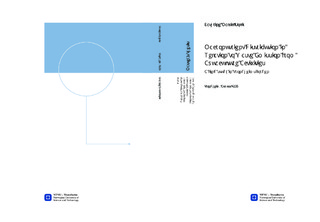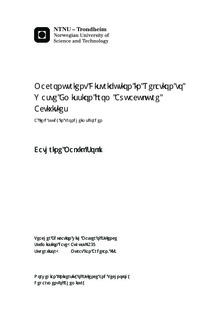| dc.description.abstract | The production of farmed fish has increased globally almost 12-fold since the 1980s. And in 2010, aquaculture production food fish reached an all-time high at 60 million tonnes. This activity releases large amounts of ammonium (NH4) and phosphate (PO4) in marine waters, to the extent that it could be endangering the surrounding environment. The increase in the supply of macronutrients to the system could lead to eutrophication and changes in nutrient ratios. This could in turn cause a shift in phytoplankton composition and changes in the food web structure. However, at present, the understanding of how nutrients and organic waste from aquaculture systems are distributed and influence the ecosystems is still poor. The aim of this work has been to gain a better understanding of the distribution of macronutrients around aquaculture cages, by comparing the concentration of NH4, PO4, NO3 and SiO3 measured at stations located near aquaculture with reference concentrations measured at stations where no or very little aquaculture activities are present. Samples were collected in Trondheimsfjorden during late winter (February) and early spring (April), to compare seasonal variations in macronutrient concentrations. The samples were analysed with an Auto-Analyser for NH4, PO4 and NO3 concentrations, and manually for SiO3 concentration. Results show a considerable increase in NH4 concentration in spring. PO4, NO3 and SiO3 concentrations decreases as expected, due to a measurable increase in phytoplankton concentration. During the second cruise (spring season), ammonium concentrations up to 18μg L-1 were measured, which is a significant increase compared to the first cruise (winter season) when all ammonium concentrations measured were lower than 10μg L-1. The ammonium concentrations in these waters can thus be regarded as considerable, and a potential source of the ammonium could be emissions from aquaculture. However, at this stage in the project, it is not possible to make any conclusions as to whether or not these ammonium concentrations are a result of aquaculture activities. | nb_NO |

